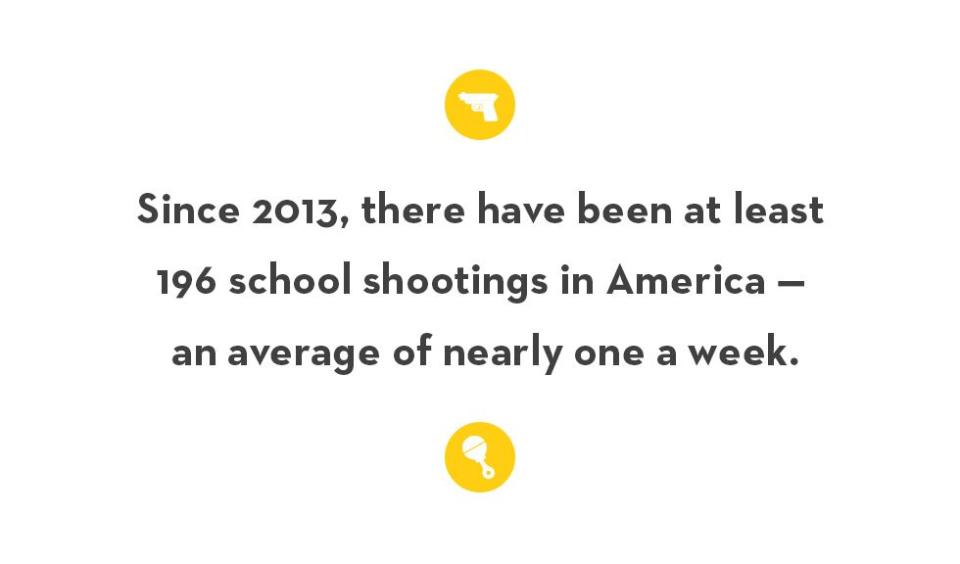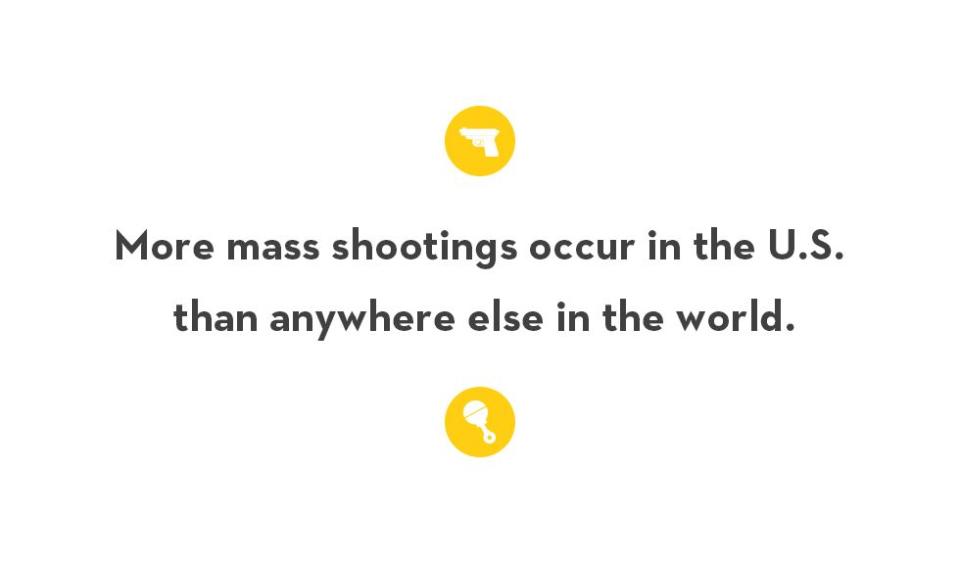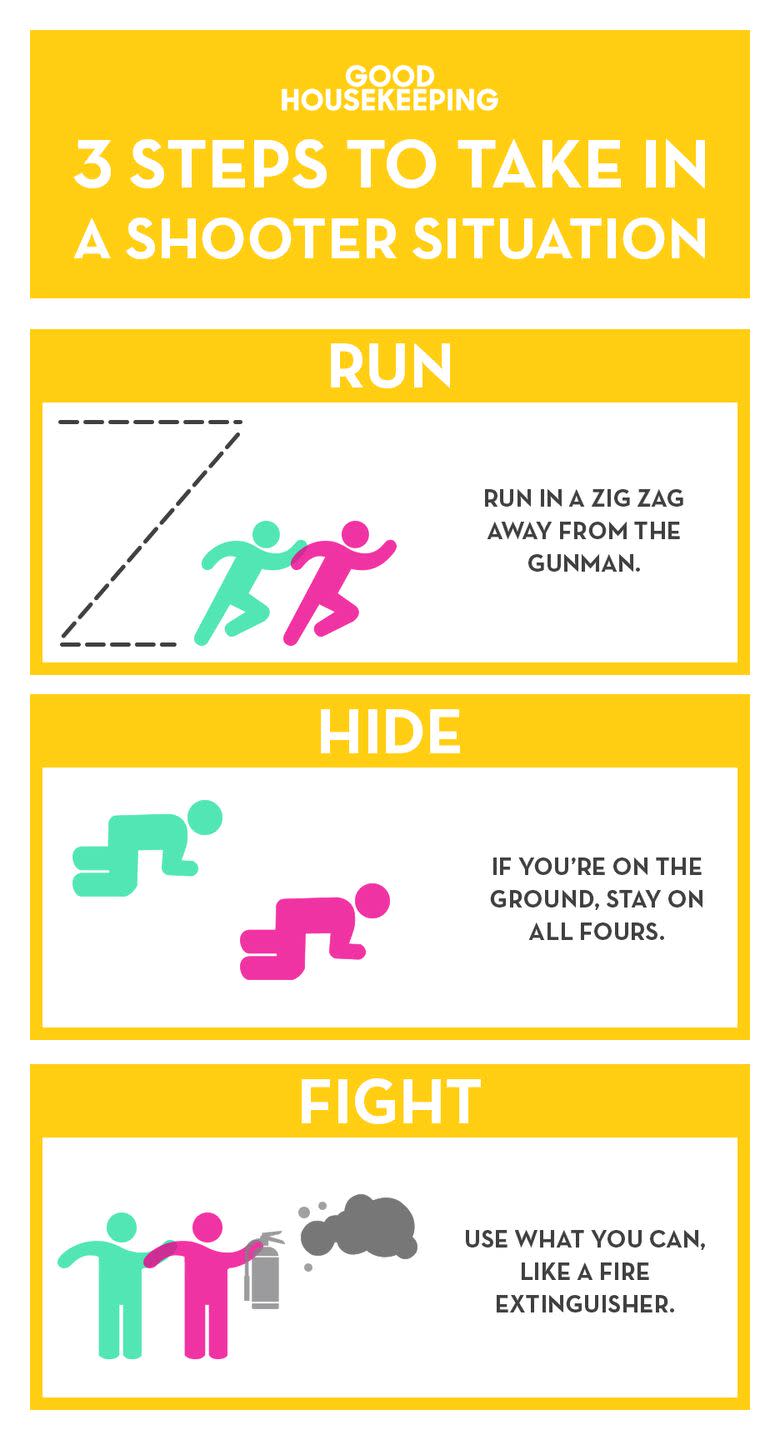12 Things You Can Do Right Now to Prep Your Kids for an Active Shooter Situation

This story was originally published in October 2016 and updated this week in light of the tragic school shooting in Uvalde, Texas. For more information about how to help prevent gun violence, visit everytown.org.
It's terrifying to think about your child ending up in a situation like the Sandy Hook Elementary School shooting in Newtown, Connecticut, or the recent fatal playground attack at Townville Elementary in South Carolina. But experts say not only should you think about it — you should plan for it.
Sadly, we're living in a new normal, where mass shootings are in the news regularly. Caitlin Durkovich, assistant secretary for infrastructure protection at the Department of Homeland Security, says she's seen an uptick in educational institutions wanting to prepare for "the eventuality" of a mass shooting. In her opinion, training for one is no less important than regular fire and tornado drills.
"As we've learned, nowhere is immune to this," says Durkovich. The good news, she says, is that there's already proof that drills can save lives. So, we asked Durkovich and other experts to share what they know with you. Get ready to take notes:
1. Teach your kids this mantra: run, hide, fight.
"The idea is to provide basic, easy-to-remember actions in the event that people find themselves in an active shooter incident," says Durkovich. "Run, which means evacuate. Hide means find shelter. And in the worst-case scenario, if you have to fight, fight to save your life." (Think of it as "stop, drop and roll" for a different kind of emergency.) But, she is quick to point out, the steps are not necessarily intended to be done in order. Instead, it depends on your environment. "You can't always find an escape route, so it may require that you find a hiding place that is out of the visibility of the shooter," she says.
2. Here's another one: If you see something, say something.
"As we go about our daily lives, the biggest mistake is not being aware enough of our surroundings to notice what might be out of the ordinary or not normal," says Durkovich."It's reporting suspicious activity if something does seem out of place rather than going into that facility." The same goes for reporting suspicious activity on social media. Also good to note: Tell your kids not to open locked emergency doors, no matter how nice the person asking to get in may seem.
3. Make sure your kid understands school protocol.
Tonya Edwards, a kindergarten teacher in Kentucky, says her school implemented active shooter training for teachers after the 2012 shooting at Sandy Hook and now practices "lockdown" drills several times throughout the school year. In the drill, teachers lead students into a small, enclosed space, lock the door and tell them to be completely quiet. "I've had some [kids] burst out crying when I first start talking about it," says Edwards. "So you stress that it's pretend and a drill. We make it a game by picking out the quietest one, to get them in that mode of being still and quiet. One sound and that might make [the shooter] want to come in." Know what your children's school practices, and discuss it at home.
4. But it's not all on the school — you can help too.
Meet with local law enforcement, school administrators and even the PTA, advises Durkovich. Ask questions about what parents should do in the event of a lockdown and who's going to keep them updated and how (the school Durkovich's children attend sends out text messages to parents that are similar to when an Amber Alert has been issued). "Those are the types of things that schools need to have in place," says Durkovich. "Plan for what you're going to do with the kids and how you're going to effectively manage your communication with parents and law enforcement."

5. If they can run, do it in a zig-zag.
All three of the experts we spoke with agree it's the number one way to increase your chances of surviving. "A moving target is far more difficult to shoot than a stationary one," says Clint Emerson, a retired Navy Seal of 20 years and New York Times best-selling author of 100 Deadly Skills. His recommended technique? Running to something that could shield you from oncoming gunfire — think concrete pillars or behind a sink counter in the science lab — before sprinting to the next thing that could provide cover, until you're out of the building. "If there is no cover, run in a zig-zag motion as fast as you can to the first right-hand turn and get yourself out of sight," says Emerson. "That makes it very difficult for the shooter to be accurate."
6. If they can hide, hide behind something concrete.
You may not always have a choice, but if you do, avoid hiding behind things made of plastic (think bathroom stalls) or other thin materials (cabinet doors, for example). "If I'm going to hide, I'm going to hide behind things that stop bullets like trees, structural pillars and big concrete planters," says Emerson. He adds that if you're outside and there are vehicles like a school bus, hide on the engine end, not on the trunk end. "Bullets can rip right through that trunk and still hit you, but the engine is going to stop it," he says.
7. If there's nothing solid, at least hide out of sight.
Concealment could be your next best option. "That's like hiding behind curtains, but the curtains aren't going to stop a bullet," says Emerson. If you're in a room and it's possible, "always barricade the door for extra safety," he adds. "In a classroom, you should put filing cabinets on the same wall as the door and say, 'Kids, let's just slide this over.' [Ideally] what's going to happen is the shooter is going to give it some effort for a couple of minutes and then he's going to say 'Forget it' and move on."

8. When hiding, stay on hands and knees.
Whether you're dropping down as an immediate reaction to hearing shots fired or crouching down to hide behind something, never put any vital organs against the floor. "Most bullets, when they ricochet, they follow the path of the floor," explains Emerson. "If a bullet comes flying, I'd rather have my hands, knee or wrist hit. If you put your lungs, heart or head right against the ground, you might get a ricochet bullet passing through your body."
9. The bathroom shouldn't be their first choice.
Another thing that may not be possible, but if it is, avoid boxed-in spaces like bathrooms, conference rooms and movie theaters. "Anytime there's a confined space, get out of there," says Emerson. "[Public] bathrooms are horrible; they don't usually have windows and there's nothing in there that's going to stop a bullet." Another tip: Stay out of doorways.
10. The adults should fight as a group.
If you can't run or hide, adults especially still have the option of fighting. It's risky but, as Emerson points out, "This is probably one of the worst scenarios that you could ever imagine, so you've really got nothing to lose." Consider this: "It's [probably] the bad guy's first time to come through those doors and take people's lives," says Emerson. "He's nervous, he's not an experienced shooter. The reality is, with some confidence and knowing what you're going to do ahead of time, you actually have more of an advantage, especially if you're within striking distance."
So, how do you take down an armed killer? If possible, Emerson encourages adults to fight as a group. "Point out a few people and say, 'Hey, when he comes through the door I'm going to go for the weapon, you go for the head and you go for the hips.' It takes one person to make a move, and that gives everyone else the courage to help," he says. "But the weapon is primary. If it comes through the door, grab it and drive it toward a wall. Then get control of the [shooter's] spine, the hips and the head, which will control the rest of the body."
11. If all else fails, look for a fire extinguisher.
When you're fighting for your life, sometimes you have to get creative. Weapons? They're all around you. "Fire extinguishers are everywhere," he says. "You can hit somebody over the head with it, spray their face or put chemicals in their eyes. A lot of commercial buildings have fire hoses in the fire stairwells. You can grab one and turn the pressure on full and knock a bad guy down or create distractions."
12. Bottom line: Keep calm.
If nothing else, says Emerson, just try your best to keep everyone around you calm to avoid drawing unnecessary attention from the shooter. "Calm is just as contagious as panic," he says. "If you panic, others will panic. You need calm, you need calculation and you need to work as a team. There's always something you can be doing to increase your security, safety and lifespan when you're in this type of situation."

You Might Also Like

